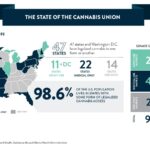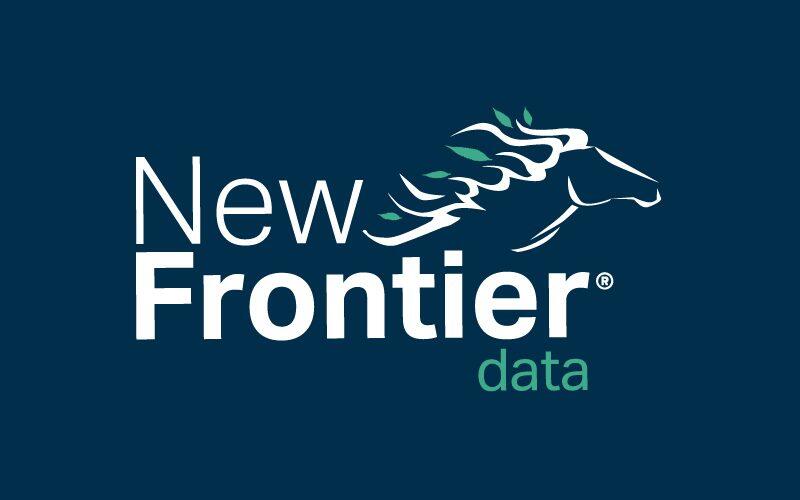At the Half of 2019, Some Trends Loom Large in the Legal Cannabis Game

U.S. Cannabis Usage
June 30, 2019
State of the Cannabis Union July 2019
July 7, 2019By J.J. McCoy, Senior Managing Editor, New Frontier Data
Midway through 2019 – some 23 years after California legalized medical marijuana, and 18 months after initiating its statewide adult-use market – a variety of decidedly instructive trends have established themselves to inform the industry, policymakers, and consumers alike.
Foremost would be changes in public opinion about cannabis and the vanishing social stigma around the plant. Just as the public’s popular opinion of it throughout recent years has changed dramatically in favor, enthusiasm about each its range of effects, variety of products, and opportunities for profit (whether on personal or social scales) has taken wing.
Last month, a poll released by Quinnipiac University, found Florida voters favoring – by a 65% to 30% margin, an “all-time high” in the state – legalization of adults’ limited possession of cannabis for personal use. Also released last month, a new Gallup poll found 86% of U.S. supporters of cannabis citing its medicinal benefits as a “very important” reason to favor legalization.
In an op/ed published last week by The Hill, legalization advocate Paul Armentano of NORML described 2019 as “an unprecedented year for the passage of state-level reforms,” and cited “historic votes at the state and federal level [as] further evidence that politicians, including those at some of the highest levels of government, are now recognizing the rapidly changing cultural and legal status of cannabis.”
As we pass the midpoint of 2019, such polls reflect a societal shift first set into motion in 1996 with the passage of California’s legalization of medical marijuana, if with increasing momentum as seen last week in Illinois with the passage of its “gold standard” program. The latter legislation may serve as a playbook for other states seeking to legalize since Illinois lawmakers’ tactics directly address serious issues which have served as barriers in other jurisdictions.
What more to expect? As New Frontier Data prepares to finalize and release in-depth analysis about a range of topics important to the industry, an informal, back-of-the-envelope review of current trends would include:
- Big Business asserting itself (as freshly deposed Canopy Growth founder and co-CEO Bruce Linton said on July 3, describing Constellation Brands as “bringing a big check and changing the board”);
- Cannabis as an agent of change toward finding social equity as a remedy for decades of unequal prohibition enforcement;
- Political winds shifting in time for the 2020 campaign: While supporting federal prohibition nationwide, S. Attorney General William Barr has said that the Justice Department will not prosecute cannabis companies operating in states where the plant is legal, and he has described the discrepancy between state and federal laws as “untenable” and needs to be fixed. Conversely, several 2020 presidential election candidates including U.S. senators Kamala Harris (D-Calif.) and Elizabeth Warren (D-Mass.) have respectively pledged their support for national legalization.
- Proliferation of different product types radically transforming the consumer experience, expanding use cases, and engaging new consumers;
- Local jurisdictional issues and bans disrupting the industry’s operationalization;
- Confusion about hemp and CBDs: The 2018 Farm Bill legalized hemp, yet the legal status of hemp-derived cannabidiol (CBD) remains in limbo as the FDA tries to determine policy going forward. The only legal CBD is limited to Epidiolex, a medicine to treat juvenile epilepsy, but confusion has arisen as speculators rush to cash in. While the FDA is accepting public comment through July 16, experts say drafting and implementing regulations could take years;
- The wellness/personal health segment (and popularity among women) challenging long-held stereotypes about consumers, and creating opportunities at the nexus of cannabis and health;
- The intersection of cannabis and alcohol: New Frontier Data has provided groundbreaking insights about cannabis consumer behavior, preferences, and emerging trends. Among the findings, the report highlighted a few conclusions regarding alcohol and cannabis consumption, including preferences and usage patterns;
Quantity issues – local market oversupply and the clean cannabis market are transforming the economics of cultivation and driving an increasing number of growers out of the market. The convergence of such trends will define the maturation of U.S. state markets, shape the trajectory of the national legalization debate, and influence the place of cannabis in the global economy. These and other issues will be explored in much greater detail in New Frontier Data’s forthcoming U.S. Cannabis Trends Report.




